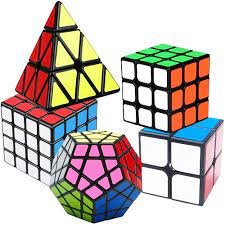
Rubik’s Cube History
Hungarian sculptor and professor of architecture Ernő Rubik invented the three-dimensional combination puzzle known as the Rubik’s Cube in 1974. Originally termed the “Magic Cube,” Rubik designed it as a pedagogical aid to illustrate three-dimensional geometry concepts to his students. After obtaining a patent for the cube in Hungary in 1975, Rubik initially had no intention of mass-producing it.
In 1975, the puzzle captured the attention of Ideal Toy Corp, a New York-based toy company, which secured the licensing rights and rebranded it as the “Rubik’s Cube.” Introduced to the international market in 1980, the cube swiftly became a global sensation, emerging as one of the best-selling puzzles and toys in history.
Comprising smaller cubes with colored faces, the challenge of the cube lies in twisting and turning its faces until each side exhibits a single color. Its complexity stems from the myriad possible combinations, totaling over 43 quintillion (43,252,003,274,489,856,000) potential configurations. This intricate nature captivated people worldwide, propelling the Rubik’s Cube to widespread acclaim.
While the Rubik’s Cube experienced an initial surge in popularity in the early 1980s, it later endured as a classic puzzle and an iconic symbol of 1980s pop culture. The era saw the establishment of speedcubing competitions and the development of solving techniques. Speedcubing, where participants aim to solve the cube as rapidly as possible, has since evolved into a global phenomenon with competitive events drawing enthusiasts from around the world.
Despite a decline in its initial popularity, the Rubik’s Cube has witnessed resurgences, particularly with the rise of online communities and speedcubing competitions. Beyond being a mere toy, the cube remains a symbol of mathematical and logical problem-solving, functioning as both an educational tool and a cultural icon.

